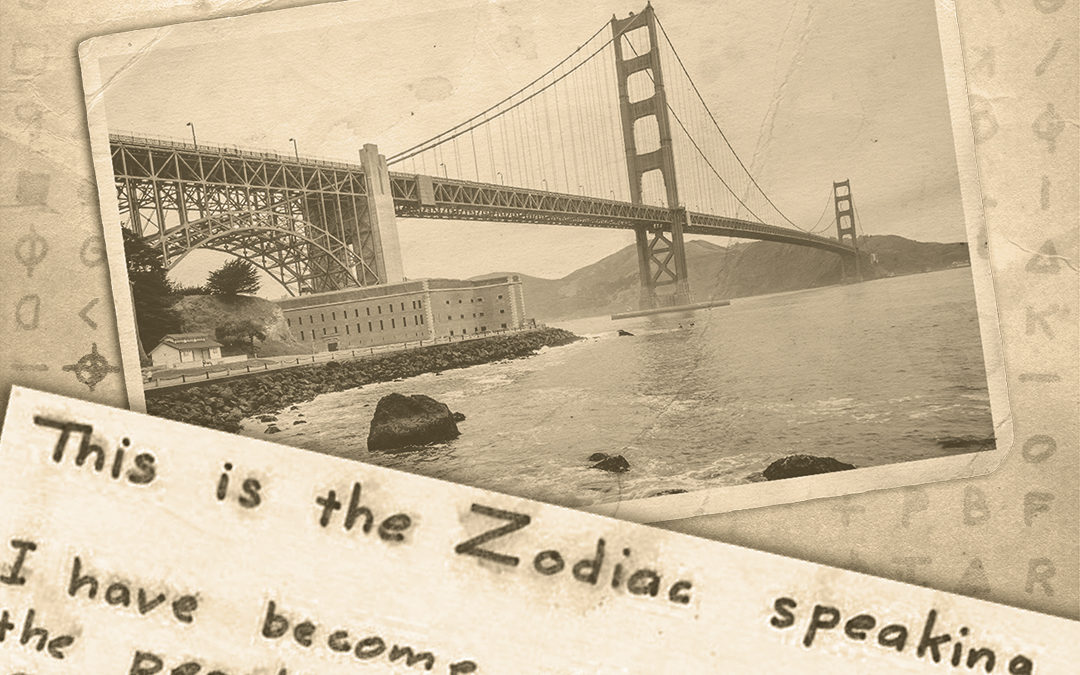7 • Prime Time
After an impromptu TV appearance, the Zodiac fights to stay in the limelight.

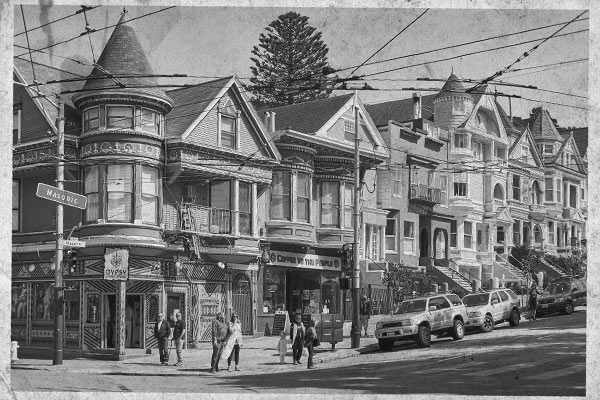
That was the voice of a man who called himself the Zodiac Killer. He’s talking to attorney Melvin Belli by phone on a television conversation show. This bizarre situation began at two o’clock this morning when the so-called Zodiac telephoned police headquarters. He said he was sick, he needed help, and he wanted to talk to attorney Melvin Belli on television.
– Dick Schumaker
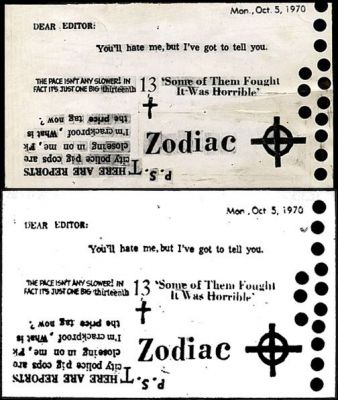
Serial killers definitely have mental disorders, but they don’t have mental illness. When you talk about mental illness we’re talking about people who, they hear voices, they hallucinate, they’re schizophrenic, they’re psychotic. That’s mental illness. We treat people for that, we give them medications for it. Then there’s another group of people who have a mental disorder, like serial killers. 90-something percent of them are clear thinking, but they’re narcissistic, they’re antisocial, they have those kinds of issues going on with them. They know right from wrong.
– Eric Hickey, serial killer expert
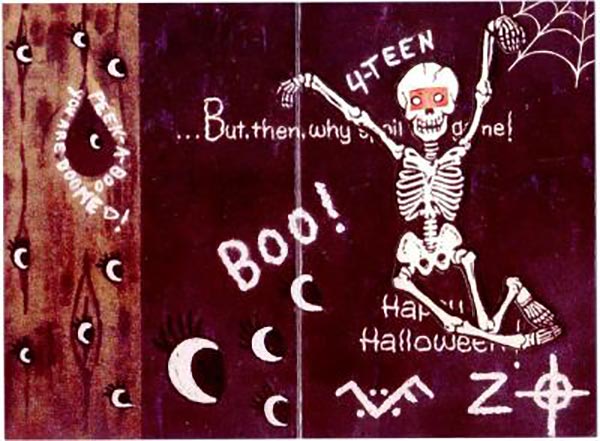
“We received another letter from the Zodiac, and it was addressed to you.”
Transcript
Speaker 1: The views and opinions expressed in this podcast are solely those of the podcast author, or individuals participating in the podcast, and do not necessarily represent those of iHeart Media, How Stuff Works or its employees.
Speaker 2: Zodiac, a symbol that now stands for terror in San Francisco. Today, there was a possibly significant development in the terrifying case of the man who calls himself Zodiac and has boasted that he is responsible for five murders in the last nine months. In Zodiac’s latest letter last week he threatened to make a busload of school children his next victims. Since then, school buses have been discretely guarded, and parents fears have openly risen. This morning, the people of San Francisco, during a television conversation program with Attorney Melvin Belli, heard a man who claimed to be Zodiac talking on the air.
Speaker 3: A man in a mask robbed, tied and stabbed them, leaving them for dead.
Speaker 4: Subject stated, “I want to report a murder. No, a double murder. I did it.”
Speaker 5: A man who wore a medieval-style executioners hood, carried a knife and gun and intended to use them.
Speaker 6: They haven’t arrested me because they can’t prove a thing. I’m not the damn Zodiac.
Speaker 7: Who is the Zodiac and where is he?
Speaker 1: From iHeartRadio, HowStuffWorks, and TenderFoot TV, this is Monster: The Zodiac Killer. Fear spread across Northern California as the Zodiac’s pace accelerated. He continued to send letters to newspapers, and to prove authenticity, he included squares of bloody clothing from the cab drivers shirt. Apparently, the letter wasn’t enough, the killer craved more attention. In October 1969, Californians gathered around their televisions, in anticipation of the Zodiac’s on-air debut. They were desperate to finally hear the voice of unspeakable evil.
Speaker 6: Kill. I want to kill.
continue reading
Dick Schumaker: That was the voice of a man who called himself the Zodiac Killer. He’s talking to attorney Melvin Belli by phone on a television conversation show. This bizarre situation began at two o’clock this morning when the so-called Zodiac telephoned police headquarters. He said he was sick, he needed help, and he wanted to talk to attorney Melvin Belli on television.
Speaker 1: The Oakland Police Department contacted Belli that night. Belli was a well-known celebrity lawyer whose clients included The Rolling Stones and Muhammad Ali. With only hours notice, Belli came on the Jim Dunbar Show to speak with the Zodiac, live, on TV.
Dick Schumaker: All the scheduled guests were canceled. Belli waited for Zodiac to call on the private line. The phone was not tapped. The killer telephoned 12 times, he spoke very little, with attorney Belli trying to draw him out.
Melvin Belli: Maybe he’s afraid of beaten up or something like that now.
Jim Dunbar: Why don’t we just ask Sam to tell us a little bit more about what he’s feeling right now. Tell us about your feelings Sam, just tell us anything you want to.
Melvin Belli: Then we’ll come back, and I’ll give you a specific answer to the question are you going to the gas chamber.
Jim Dunbar: Talk to us, just tell us what’s going on inside you right now Sam, please.
Speaker 6: I have a headache.
Jim Dunbar: Right. How long have you had those headaches, Sam? Been a long time?
Speaker 6: Since I killed a kid.
Melvin Belli: If it all boils down to the question of you’re giving yourself up if you can be assured that you wouldn’t get capital punishment, for me-
Speaker 6: I don’t want to give myself up.
Melvin Belli: Huh?
Speaker 6: I want to kill those kids.
Dick Schumaker: Belli finally arranged to meet Zodiac in Daly City, a suburb south of San Francisco to talk in person. Inside the thrift shop. Saint Vincent De Paul, attorney Melvin Belli, and the San Francisco Police waited for the Zodiac Killer.
Speaker 8: We were told to, that he would meet us at the Saint Vincent De Paul Society blacks on Mission Street in Daly City. We waited about, oh I guess over an hour and no evidence that he was there.
Dick Schumaker: Is there anything to add this afternoon that leads you to believe that the man called indeed might have been the legitimate Zodiac Killer?
Speaker 8: Well again, my opinion and a dime will buy you a half a cup of coffee, I don’t really know. The only thing I can conclude, as I’m sure anyone listening might have concluded, is it sounded like a fellow who does have a pretty serious problem and is pretty seriously disturbed. Whether it’s Zodiac, I don’t know.
Dick Schumaker: The man did not show, so now all we can do is wait perhaps for that next phone call from the man who calls himself Zodiac, who has killed five, and says he’s going to kill again. Dick Schumaker, ABC News, San Francisco.
Speaker 2: We’ll be back with more news in a moment.
Speaker 1: Police brought in the witnesses who had heard the Zodiac speak. Brian Hartnell, the survivor from the Lake Berryessa stabbing, and two phone operators who had heard the Zodiac’s calls. No one knew whether it was the real Zodiac. The Zodiac had now killed five people, and his attacks seemed to be accelerating. Half a year separated the first two shootings, then only three months later was the Lake Berryessa attack. Then, just two weeks after that the Zodiac shot cab driver Paul Stein in San Francisco. The LA Times reported that the threat of his next crime galvanized one of the most massive manhunts and one of the greatest waves of public alarm in San Francisco history. The manhunt extended as far as Atascadero, four hours south of San Francisco. There, police checked up on 300 ex-inmates of a hospital for the criminally insane. Despite this intensive search, the case went cold, until two months later when Melvin Belli, the famous attorney you heard earlier, received a strange letter. The Zodiac had sent a letter directly to Belli’s home, with a piece of the cab drivers bloody shirt to prove its authenticity.
Speaker 6: Dear Melvin, this is the Zodiac speaking. I wish you a happy Christmas. The one thing I ask of you is this, please help me. I cannot reach out for help because of this thing in me won’t let me. I am finding it extremely difficult to hold it in check. I’m afraid I will lose control again and take my ninth, and possibly the tenth victim. Please help me. I am drowning. At the moment the children are safe from the bomb because it is so massive to dig in and the trigger mech requires much work to get it adjusted just right. If I hold back too long from number nine, I will lose complete all control of myself and set the bomb up. Please help me. I cannot remain in control for much longer. Signed, Zodiac.
Speaker 1: It seemed like maybe the Zodiac really was reaching out to the lawyer to get help, but the letter also had his usual threats. He mentioned the bus bombs and was now claiming eight victims. The Zodiac had included specific details about his first five murders in his letters. Then he said he would start to disguise his killings, making them look like routine robbery’s, killings of anger or accidents. Because of this, police were unsure which recent murders might be the Zodiac’s. After attorney Melvin Belli received the Zodiac’s letter, he published a response in the San Francisco Chronicle. He said he was willing to meet the killer anytime, any place. Belli said, “If you want to meet with me alone, I will come alone.”
He continued, “I believe he wants to stop killing. He knows eventually he will get apprehended and that unless he gets proper legal representation, he will most probably be sentenced to die in the gas chamber.” Belli was next contacted by telephone. While Belli was out, a man claiming to be the Zodiac called and asked to speak with him. Belli alerted the FBI and the San Francisco Police Department. They tapped his phone, so they could trace future calls, and again they waited. Hoping the Zodiac would call back. Eventually, another call came. Police managed to trace the call, and detectives Toschi and Armstrong drove out to arrest the Zodiac. They arrived at a mental hospital. The caller had been a patient.
A man named Eric Weil. He was a hippie and an amateur photographer. The detectives determined that Weil was the caller to the Jim Dunbar Show. Ultimately, they also ruled him out as a suspect. The voice on the television call-in show was not the Zodiac. Reporters account about Eric Weil differ. Some say he was at a mental hospital in Oakland, others say it was in Napa, north of Vallejo. It’s unclear exactly how the detectives ruled out Eric Weil as a suspect. Serial killer expert Eric Hickey told us that while there’s obviously something wrong with them, it’s rare for serial killers to be mentally ill.
Eric Hickey: Serial killers definitely have mental disorders, but they don’t have mental illness. When you talk about mental illness we’re talking about people who, they hear voices, they hallucinate, they’re schizophrenic, they’re psychotic. That’s mental illness. We treat people for that, we give them medications for it. Then there’s another group of people who have a mental disorder, like serial killers. 90-something percent of them are clear thinking, but they’re narcissistic, they’re antisocial, they have those kinds of issues going on with them. They know right from wrong. In a court of law, they would not be found to be insane. People get confused, they think “Well look at Jeffrey Dahmer, if you killed 17 people and ate them for dinner, you must be insane.”
Well, the behavior’s insane, but Dahmer was never mentally ill. He knew right from wrong. He even admitted it. He always knew it was wrong to do what he was doing, now yet, there are other people who are truly mentally ill when they do these types of things. That always has to be figured out when you’re looking at a crime scene. Is it someone who’s mentally ill? Or is it someone who’s psychopathic? In my field, we examine psychopathology. What level of psychopathology would the Zodiac be at? One scale that’s used to study psychopathology goes from zero to 40 points. Most people are going to be between a four and an eight on the scale. Then the occasional criminal that does things once in a while, they’re going to rate in the low teens.
Then you get people who are kind of antisocial, most people in prisons today are what we call sociopaths, you know they probably rate an 18 to a 29 on that scale. They’re impulsive, they don’t learn from their mistakes, they have high recidivism rates and so on. They are antisocial, but they still love their moms. They still have emotional attachments to people. Whereas a true psychopath, they’re a 30 and above, and these people do not have emotional attachments to people. They don’t empathy, they don’t have a conscience. There aren’t that many of them out there, and a lot of psychopaths, true psychopaths never get caught because what differentiates them from so-
Eric Hickey: True psychopaths never get caught, because what differentiates them from sociopaths is that they have a skill set that’s incredible. They can manipulate and lie and charm people, and they’re so good at their social skills that people just don’t believe that they could be doing anything wrong. That’s a smaller group. Call those psychopaths. One of the myths about serial murder is that they’re all psychopaths. Well, this is not true. Only 25 to 30% were found to be true psychopaths.
Speaker 1: Dr. Hickey says the Zodiac is likely a true psychopath, near the top of that 40-point scale, because of his self-obsession and craving for fame.
Eric Hickey: Narcissism is one of the traits we see in true psychopaths. They’re quite narcissistic, and thus they want to be recognized for what they’ve done. It is not surprising that the Zodiac killer, that it’s all about him because he’s smarter than the police. He’s smarter than his victims. He’ll never get caught. This kind of thinking that he’s better than everybody else. The fact he did get away with it for this long shows that he was right.
Speaker 1: The whole TV call-in saga and then subsequent contact with Melvin Belli was puzzling. Investigators determined the caller to both the TV show and to Belli’s house was mental patient Eric Weil, and that Weil couldn’t be the Zodiac, but the actual Zodiac had written to Belli, and he included a piece of Paul Stine’s shirt as proof.
What was going on? Was the Zodiac’s letter a real cry for help? Had the Zodiac set up the TV call in, but then Eric Weil interrupted it or had Weil set up the call in, and then the Zodiac wrote to Belli to try and stir up more media attention? The timing of this letter to Belli was interesting. It was mailed the day after another California killer’s face was plastered on the cover of Life Magazine.
Speaker 9: December 19th, 1969, Life Magazine, the strange story of Charlie Manson and his brood of nubile flower children charged with murder. Life in a sex and drug devoted communal family that lived on the far edge of society under the absolute, almost mystical domination of Charles Manson. Manson gave the orders, and the family carried them out.
Charlie Manson so disturbed the American millions last week when he was charged with sending four docile girls and a hairy male acolyte off to slaughter strangers in two Los Angeles houses last August. What failure of the human condition could produce a Charles Manson? What possible aspects of such a creature’s example could induce sweet-faced young women to acts of such numbing cruelty?
Speaker 1: The Manson story was a media sensation. The next day, when the Zodiac sent his letter to Melvin Belli, was he trying to regain the attention he seemed to so desperately crave? The Manson trial and its press coverage stretched on for months, and America was repeatedly shocked by new revelations about the Manson family, but the Zodiac wasn’t willing to give up his place on the front page.
If you pay attention to when the Zodiac sent his letters, it seems as if for every article published about Manson, the Zodiac responded within days with a new letter, taunting police with an ever-increasing kill count, and demanding the press give him the coverage he felt he deserved.
Speaker 9: April 19th, 1970, San Francisco Examiner, cult chief’s pal guilty in killing.
Speaker 10: April 20th, 1970. This is the Zodiac speaking.
Speaker 9: Beausoleil, 22, testified it was Manson who killed Hinman. The baby faced defendant said Manson, leader of a nomadic hippie style clan, sought $20,000 from Hinman. “Charles pulled a sword from behind his leg and stabbed,” Beausoleil said.
Speaker 10: I hope you do not think that I was the one who wiped out that blue meanie with the bomb at the cop station, even though I talked about killing school children with one. It just wouldn’t do to move in on someone else’s territory. I’ve killed 10 people to date.
Speaker 9: April 21st, 1970, gas chamber for musician’s slayer.
Speaker 10: April 28th, 1970. I hope you enjoy yourselves when I have my blast.
Speaker 9: Beausoleil maintained it was Manson who killed Hinman.
Speaker 10: If you don’t want me to have this blast, you must do two things. One, tell everyone about the bus bomb with all the details. Two, I would like to see some nice Zodiac buttons wandering around town. Everyone else has these buttons like peace, black power, Melvin eats blubber. Well, it would cheer me up considerably if I saw a lot of people wearing my button. Please, no nasty ones like Melvin’s.
Speaker 9: June 12th, 1970, Manson battles with bailiffs. Charles Manson fought with three bailiffs trying to force him into his seat, then was led, shouting, out of court, along with three others charged with murder conspiracy in the slayings of actress Sharon Tate and six others. The women sat down, then jumped up again. Miss Krenwinkel raised her arms and addressed newsmen seated in the jury section. “We gave our lives once before. Don’t you know who we are? You put us on the cross once before. Why don’t you do it again?”
Speaker 10: June 26th, 1970. This is the Zodiac speaking. I have become very upset with the people of San Fran Bay Area. They have not complied with my wishes for them to wear some nice Zodiac buttons. I promised to punish them if they did not comply, by annihilating a full school bus, but now school is out for the summer, so I punished them in another way. I shot a man sitting in a parked car with a 38. Zodiac, 12. San Francisco Police Department, zero.
Speaker 9: July 24th, 1970, state tells bizarre Tate killings motive. Charles Manson hoped to touch off a Negro-white blood bath in the United States by making it appear that blacks had committed the Tate-LaBianca murders. Manson, 35, appeared in court with a red cross slashed on his forehead, framed by his dangling hair. Manson did it with two slashes of a razor blade. Manson has, in the past, called himself Christ and Jesus.
Speaker 10: July 24th, 1970. I am rather unhappy because you people will not wear some nice Zodiac buttons. I now have a little list starting with a woman and her baby that I gave a rather interesting ride for a couple of hours one evening a few months back.
Speaker 9: July 25th, 1970, Manson wanted a race war. With a Beatles song spinning in his mind, Charles Manson ordered the murders of actress Sharon Tate and six others in hopes of igniting a black-white war. To Manson, Helter Skelter, one of the Beatles songs, meant the black man rising up against the white establishment and murdering the entire white race. Manson believed the race war would wipe out all whites except Manson and his clan, who intended to escape by going to the desert. Helter Skelter was scrawled in blood on a wall at the home of two of the victims. The scrawlings and other evidence were aimed at making it look like black people had murdered the five Tate victims.
Speaker 10: July 26th, 1970. Being that you will not wear some nice Zodiac buttons, how about wearing some nasty Zodiac buttons? If you do not wear any buttons, I shall, on top of everything else, torture all 13 of my slaves that I have to wait for me in paradise. Some I shall tie over anthills, and watch them scream and twitch and squirm. Others shall be placed in cages and fed salt beef until they are gorged, and I shall listen to their pleas for water, and I shall laugh at them. Others will hang by their thumbs and burn in the sun. Then I will rub them down with deep heat to warm them up. All billiard players, I shall have them play in a darkened dungeon cell with crooked cues and twisted shoes. Yes, I shall have great fun inflicting the most delicious of pain to my slaves. San Francisco Police Department, zero. Zodiac, 13.
Speaker 9: October 27th, 1970, a witness describes Manson’s visions of racial warfare. Manson had compounded a theory of eminent racial strife from the Bible and the Beatles. After the killings, whites were to go into the black ghetto and kill. Then the blacks would wipe out the white survivors, but after the blacks had won, they would not like the responsibility of governing and would call Manson and his followers from the desert.
Poston said he was under the influence of LSD in June 1969, when he met Manson in the Sunset Boulevard home of a member of the Beach Boys rock group. “He asked me if I could make love in front of 25 people,” said Poston. He said he thought Manson was Jesus Christ.
Speaker 10: October 27th, 1970. Paradise slaves by fire, by gun, by knife, by rope. Peek-a-boo. You are doomed. 14. Boo! Signed Z.
Speaker 1: Melvin Belli wasn’t the only one to receive a personal message from the Zodiac. That last correspondence you heard from the Zodiac was actually a Halloween card, a black card with a dancing skeleton. The writer had used whiteout to draw cryptic symbols and 13 peering eyes. He sent it to Paul Avery, a reporter at the San Francisco Chronicle who’d been covering the Zodiac. Duffy Jennings remembers when Avery received the card.
Duffy Jennings: During the course of my couple years as a copy boy, I got to know all the reporters pretty well, and that included Paul Avery. He’d been a war correspondent in Vietnam, and he loved to do crime stuff. He kind of took a shine to me, and we became sort of friends. He was a few years older. Around 1970, as I started to work as a reporter and we became closer friends, I’d go with him out following leads about certain suspects or types of evidence that would come in.
Only one Zodiac letter was actually personal to Paul Avery. It was a Halloween card he sent, and it had kind of a creepy message to it. “Peek-a-boo. You’re doomed,” I think it said.
Paul Avery: The two homicide inspectors who were working the Zodiac case came in and tapped me on the shoulder and called me outside and said, “We received another letter from the Zodiac, and it was addressed to you.” It was a Halloween card interpreted as being a threat to me. At that point, he had been claiming 13 victims. This one mentioned 14, and the presumption was that either he had killed 14 people at that point, and maybe I was number 15, or maybe I was supposed to be number 14.
Duffy Jennings: At a time in the seventies, reporters didn’t get killed in the line of duty. I think maybe in that whole decade, it might have been, up to that point, one reporter, a guy named Don Bolles at the Phoenix who had his car blown up by some organized crime figure he’d been writing about, but otherwise, reporters, it wasn’t an unsafe job.
As we talk, there’s an assault on the media going on, and there’s a lot of fear of what people might do, but at that time, in the 70s, you never thought about your own safety. When Avery was threatened, somebody in our newsroom engaged in a bit of sort of maudlin newsroom humor, which you know we want to do. They had these buttons made up, big white-
Duffy Jennings: To do, and they have these buttons made up. Big white buttons like campaign buttons, and it said in big black block letters, “I am not Avery.” We all got one and wore them, and we had a great laugh about it. And Herb came, he was the big gossip columnist, wrote an item about it, and then TV stations sent crews over to do stories about the buttons, and then it became national news that all the people at Chronicle were wearing these I’m not Avery buttons. Avery himself wore a button. And they said, “Are you concerned about this at all?” And he goes, “No.” He says, “I’m not worried about it.” But I have to tell you that in addition to wearing a button Paul started to wear a holster. He got a handgun permit from the police chief.
Speaker 11: I think that the Zodiac is just making an idle threat frankly. But at the same time, I’m no fool, I’m going to be very careful. There was a conference with the police department, a discussion of possible police protection for me. It was finally decided that, no, at this time, at least, it’s unwarranted. Somebody takes a shot at me that’ll be a different case, but at this point, we don’t feel a need for protection.
Duffy Jennings: And I have to tell you that whenever I went out of the building with Paul, I had to kind of look around. You didn’t think Zodiac was the kind of guy who was going to target someone in particular, but what if he did? And what if he missed? What if you were with the guy? All of this goes through your head.
Speaker 11: He has bragged of killing up to possibly 14 people, but there’s absolutely no evidence that he’s killed more than five. I put no credence into this. I think he just wanted to get himself a little publicity. With the killings that have gone on in this area in recent weeks that have created very big headlines, possibly, he’s a little miffed. He’s not the center of attention anymore.
Speaker 1: The Zodiac had been continuously bragging about new murders in the 11 letters and cards he sent in just over a year, but he stopped supplying any evidence. Had he made good on his threat to disguise his murders as routine killings? Or had he stopped killing altogether, and the letters were just for attention?
We spoke to criminal psychologist James Fox about whether serial killers ever do just stop killing.
James Fox: I started studying multiple homicides including serial murder back in the early 1980s. Back then people essentially believed those repeat killers were glassy-eyed lunatics, and we found, actually, that they were extraordinarily ordinary, and that was why they’re so dangerous. If they looked and acted like the serial killers in the movies like Jason or Freddie Krueger we’d avoid them like the plague. But the fact that they blend in so well, and have an outward appearance of being a nice guy makes them extremely dangerous. Many of them were quintessential sociopaths. They cared only for their own pleasures no matter who they hurt in the process, and they also had an insatiable need for power, and control, and dominance, and often times satisfied those needs through rape, and torture, and mayhem.
But one thing that’s fairly clear is that lots of people have this excessive need for power, and control, and dominance but they’re able to satisfy it is socially legitimate ways. They may be a corporate executive who hires and fires and enjoys the idea of hurting other people through these firings. Or they may be a college professor who enjoys flunking a student and seeing them squirm. But the thing about serial killers is they don’t have that ability. They don’t have an outlet to satisfy their need for power and dominance.
To give a good example Dennis Rader, the BTK killer, always wanted to become a police officer but wasn’t able to make it onto the force. He started killing victims, but after many years when he got a position as a compliance officer in his neighborhood, and he could give people citations if their grass was too long gave him the authority that he always wanted to have, and then he stopped killing. He stopped killing ’cause he had another way to satisfy that power he wanted over other people.
Speaker 1: Were the Zodiac’s letters his outlet? Did manipulating the police and the media quench his desire for power and control?
Here’s Zodiac expert Michael Butterfield.
Michael B.: The Zodiac went from being a nameless killer on a road at night to be a bizarre killer wearing a costume during daylight to killing a cab driver in a populated area to threatening school children, and then becoming a modern terrorist.
After his last known murder, cab driver Paul Stine, the Zodiac wrote a lot of letters but didn’t appear to engage in any further attacks.
There was never any bomb found along any roadsides. There’s never any attempts to bomb any school buses or anything. But he sure created weeks and months of terror in the Bay area that is remembered to this day, and I think that was part of his goal. These bombs served the purpose of removing him from the equation. He doesn’t even have to be there anymore. He knew that all he would have to do is draw a little bomb and mail it to a newspaper, and it would not only create instant terror, but it would be covered all over the place.
Even though the Zodiac probably had stopped killing, and was sitting at home and just watching TV and reading the newspaper you still feel scared of him. It has no resolution, no end, ’cause you still think he’s out there. He became someone who could be around any corner in any shadow at any time.
But the Zodiac was also sort of drowned out at times by other major crime stories. A lot of people were paying more attention to things like the Manson trial, and all the chaos, and insanity of that. And then as the ’60s came to an end and the ’70s came around, that was the age of the serial killer. And I think the Zodiac was sort of overshadowed by all of this, and, perhaps, he sensed that in some way that time had moved on that America had become even more violent than he was and moved to another level, and maybe that’s why he, in a sense, stepped away from it.
But then in March of 1970, a young woman claimed that she had been driving along a freeway, and a vehicle pulled up alongside her, and the man inside gestured towards her vehicle as if there was something wrong. So, she pulled over, the man pulled over and said, “Hey. Your tires loose.” And that gave him a perfect opportunity to pretend to be the good Samaritan and offer her a ride.
Speaker 1: Next time on Monster: The Zodiac killer.
Michael B.: Investigators at Riverside were watching and saying, “This looks kind of familiar. And maybe these crimes are connected.”
Speaker 12: A young inexperienced Zodiac murdered Edwards and Domingos more than five years before his reign of terror in San Francisco.
Speaker 13: It said, “Bates had to die. There will be more.” And right at the bottom, there’s a Z.
Speaker 14: In this monotone, looking at me, driving on-
Speaker 15: He said to you that he was going to kill you.
Speaker 14: “You’re going to die, and I’m going to kill you and pull that baby out.”
Speaker 1: Monster: The Zodiac Killer is a 15 episode podcast produced by iHeartRadio, HowStuffWorks, and Tenderfoot TV. Donald Albright and I are executive producers on behalf of Tenderfoot TV alongside producers Meredith Stedman, Mason Lindsey, and Christina Dana. Jason Hoch is an executive producer on behalf of HowStuffWorks along with producers Trevor Young, Miranda Hawkins, Ben Kuebrich, and Josh Thane. Scott Benjamin provides additional voice talent. Matt Frederick is our host. Original music is by Makeup and Vanity Set.
If you haven’t already make sure to check out the first season of Monster called Atlanta Monster about the Atlanta child murders from the late ’70s to the early ’80s. Download the 10 episode season right now.
Have questions or comments e-mail us at Monster@howstuffworks.com, or you can call us at 1-833-285-6667.
Thanks for listening.
Episodes
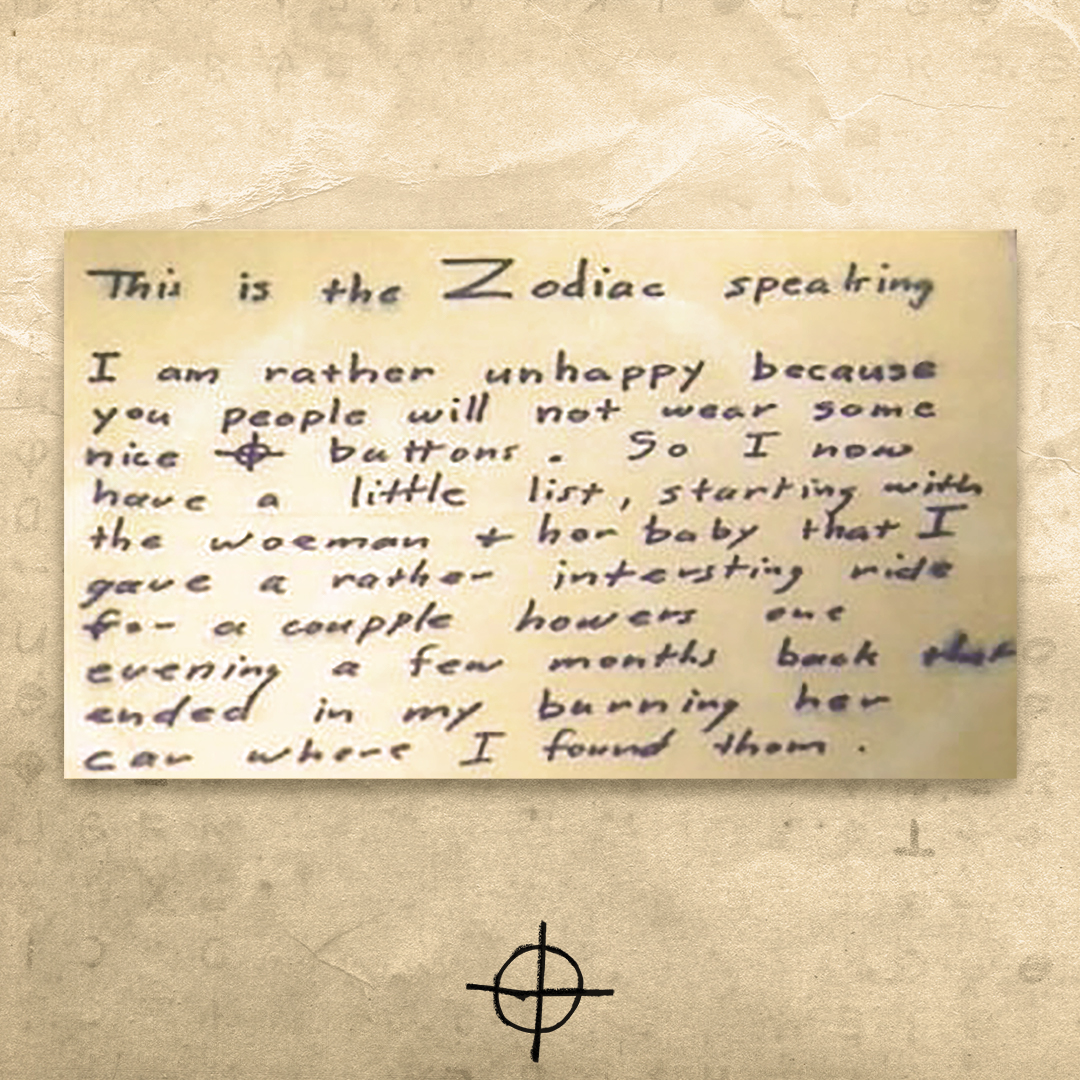
8 · Origins
A close encounter with the Zodiac sends investigators to Riverside, California.
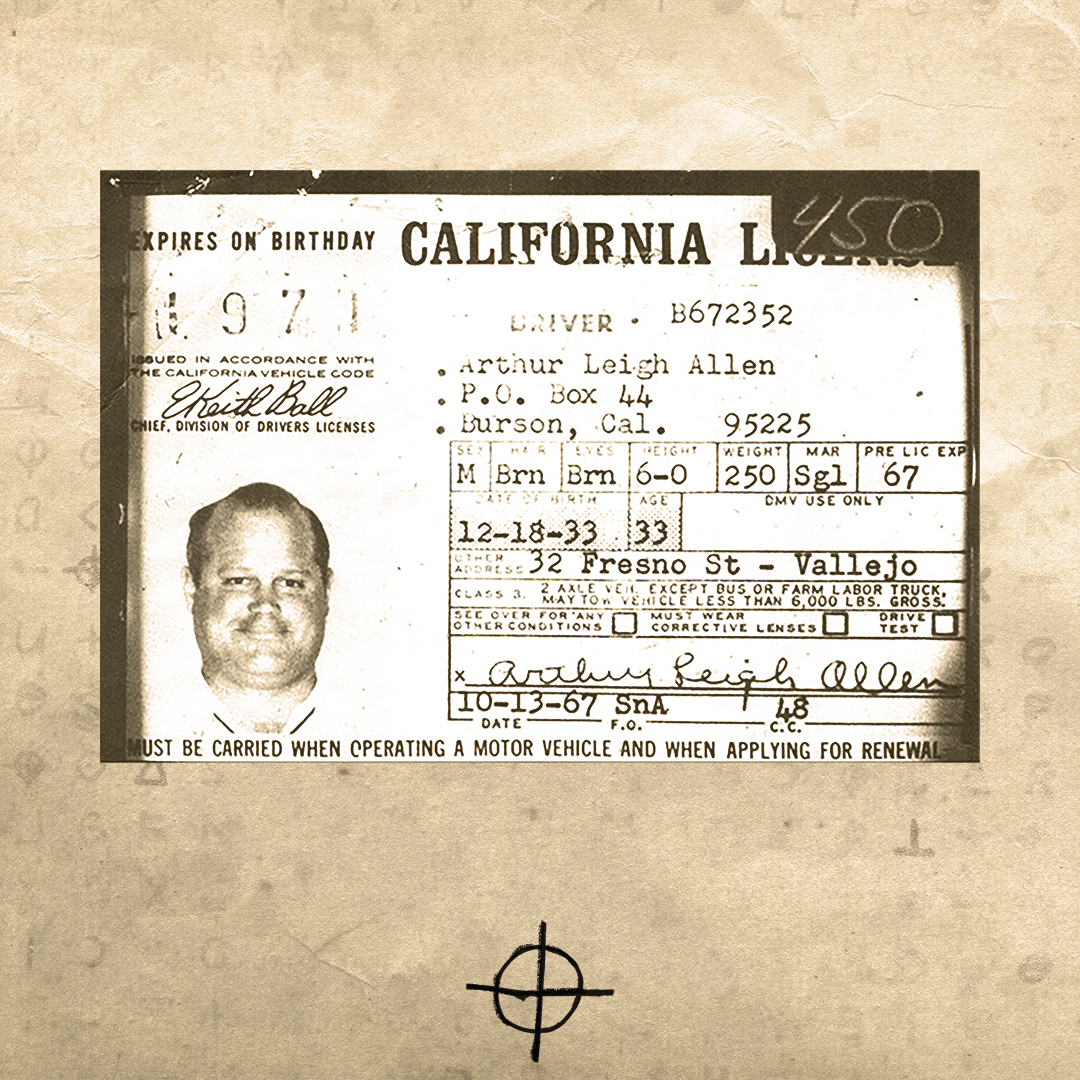
9 · The Prime Suspect
Investigators finally put a name and face to the Zodiac. The prime suspect is revealed.
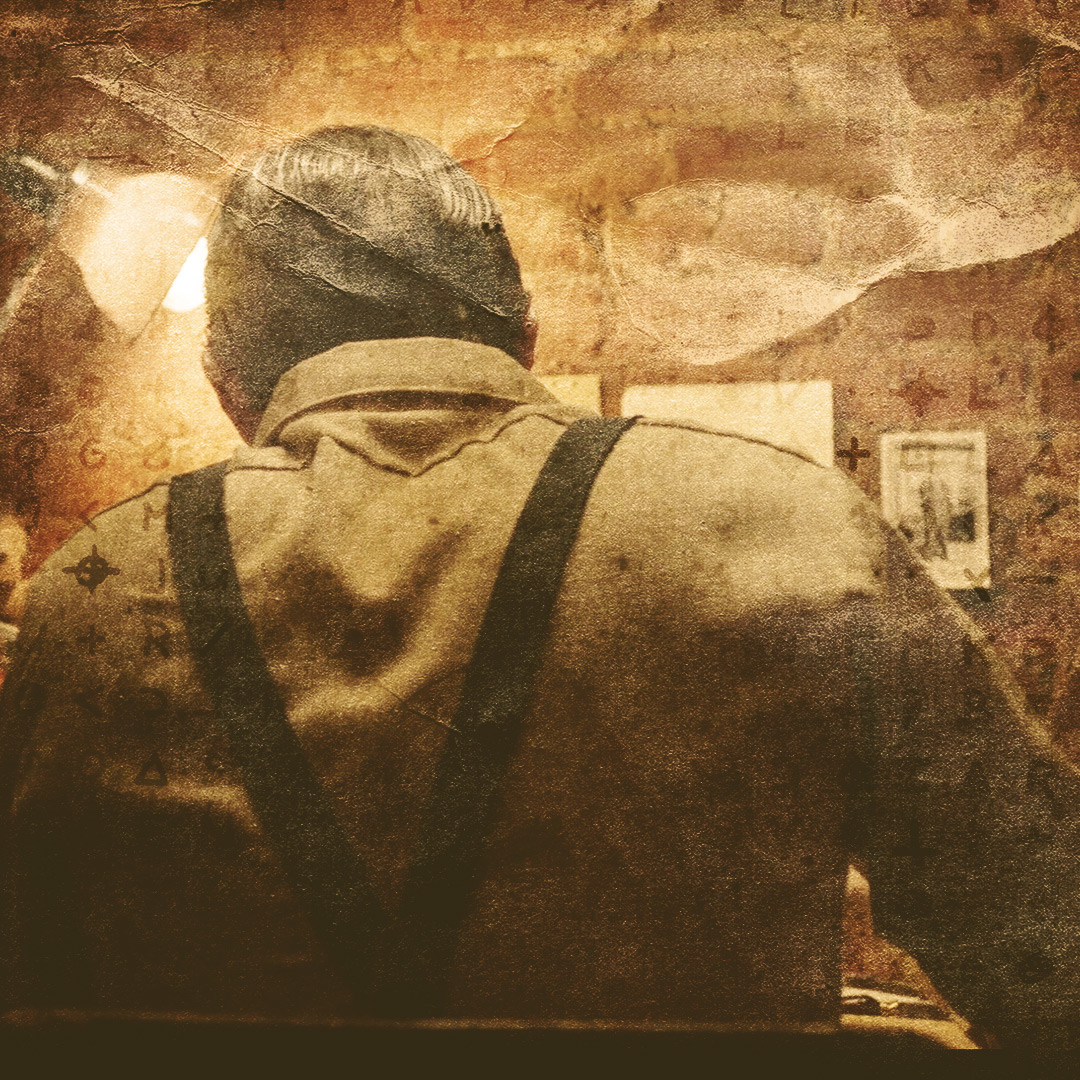
10 · Doubt
What if the story you’ve heard about the Zodiac is not the real story? It’s time to separate fact from fiction.
